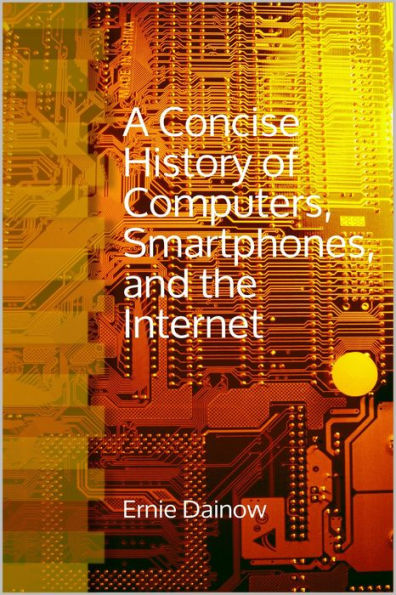The very first electronic computers were invented at the end of World War II. They were very large machines that could only be used in special air conditioned rooms. Today, almost everybody carries a computer in their pocket, in their mobile phone. How did all this come about in only 70 years?
This book is for people who would like to know the answer to this question. It tells this exciting story, with a lot of pictures. This book is not a complete history, rather it is a concise history that covers the most important people, companies and inventions that led to where we are today.
The first chapter covers the evolution of computer hardware - the physical machine. The second chapter focuses on the software - the programs that provide the instructions that tell the hardware what to do. The third chapter covers the most important data networks that were developed so that computers could communicate with each other, ending with the Internet which only became the dominant computer network after 1995. The last chapter on Smartphones traces its history from the discovery of radio waves in the late 19th century to the Apple iPhone.
This book does not require a lot of technical knowledge about computers. People who are interested in learning more about how computers actually work can read the companion book "Understanding Computers, Smartphones and the Internet", by Ernie Dainow.
The very first electronic computers were invented at the end of World War II. They were very large machines that could only be used in special air conditioned rooms. Today, almost everybody carries a computer in their pocket, in their mobile phone. How did all this come about in only 70 years?
This book is for people who would like to know the answer to this question. It tells this exciting story, with a lot of pictures. This book is not a complete history, rather it is a concise history that covers the most important people, companies and inventions that led to where we are today.
The first chapter covers the evolution of computer hardware - the physical machine. The second chapter focuses on the software - the programs that provide the instructions that tell the hardware what to do. The third chapter covers the most important data networks that were developed so that computers could communicate with each other, ending with the Internet which only became the dominant computer network after 1995. The last chapter on Smartphones traces its history from the discovery of radio waves in the late 19th century to the Apple iPhone.
This book does not require a lot of technical knowledge about computers. People who are interested in learning more about how computers actually work can read the companion book "Understanding Computers, Smartphones and the Internet", by Ernie Dainow.

A Concise History of Computers, Smartphones and the Internet

A Concise History of Computers, Smartphones and the Internet

Product Details
| BN ID: | 2940154057605 |
|---|---|
| Publisher: | Ernie Dainow |
| Publication date: | 02/12/2017 |
| Sold by: | Smashwords |
| Format: | eBook |
| Sales rank: | 466,455 |
| File size: | 2 MB |
